The Methods According to Physiotherapist, Paul Horvath
Blog Content Interviews // April 22, 2018
Paul Horvath, brother of Juliu Horvath, the founder and creator of the GYROTONIC® Method and the GYROKINESIS® Method, has a unique approach to this work. His insights are shaped from many years as a gymnast, gymnastics coach, and physiotherapist.
I was curious about his perspective on the methods, so we sat down for an interview at the Rheintal Clinic. This is a rehabilitation clinic in Bad Krozigen, Germany where he first began his work as a physiotherapist, and eventually introduced the Gyrotonic and Gyrokinesis Methods as a primary treatment modality.
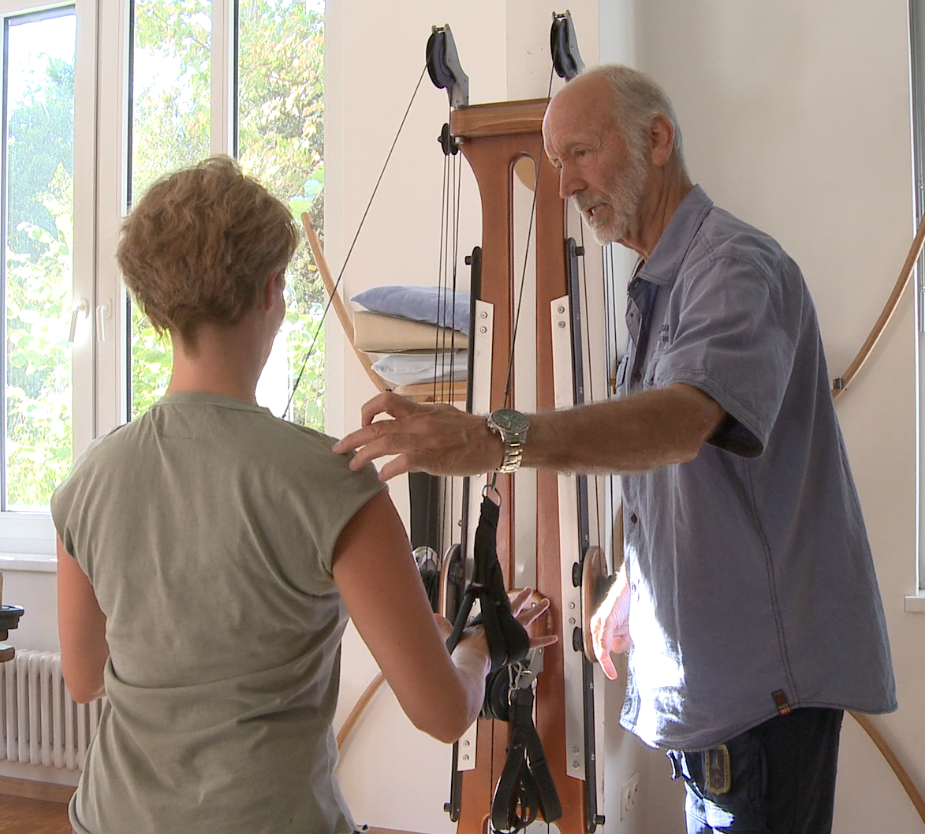
Explanation of the Methods by Paul Horvath
Cina: Thank you for sharing your perspective, Paul. Let’s begin with why these methods work.
Paul: It is difficult to explain to people why these methods work. It’s not theoretical but rather practical. You have to experience it. Many doctors have gone through the Level 1 Gyrotonic training with me, to feel it for themselves. From personal experience, a person can discover what this is about — muscular meets somatical.
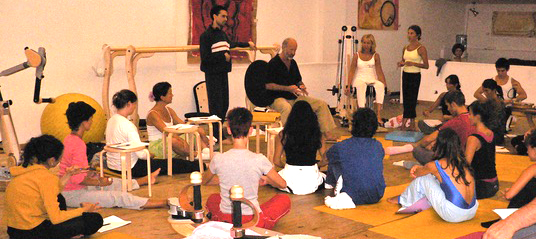
Photo provided by Paul Horvath
The somatic part is not just a biomechanical manifestation; it’s also energetic and a projection of what’s happening on the inside of the body to be seen on the outside.
What’s happening inside, organically, has a reflection in the body. The physical body part represents many directions, like biomechanically and energetically correct movement, by not stopping the flow of energy, but rather moving the energy and releasing different parts. In this way, the external is reflected inside.
Also, when you stimulate outside, you have activity inside. The best stimulation for the physical body is the connective tissue. When you stimulate the connective tissue, you build every tissue that then impacts the whole.
The connective tissue, or fascia, is very important. It’s like in osteopathy, craniosacral therapy and other manual work — they use continuous, slow tension to manipulate the connective tissue and organ mobility.
We use the same principle of slow, continuous tension in movement, stabilization in contrast, and the tension arc to stimulate the somatic and organic (visceral) functionality. This equals mobility. The organic mobility equals motility. You build a whole arm, leg, and spine axis, and you affect the whole in two essential directions — front and back — which brings harmony in respect to the energetic and physiological principles. It is more complex, but this is a basic explanation.
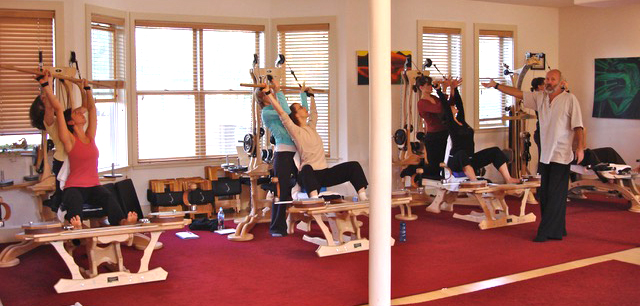
Photo Provided by Paul Horvath
So, this is the concept. In practice, the Gyrotonic principles are that you have complex movements that are three dimensional, segmented, slow motion, and with different intensities and tension.
In physiotherapy, you have these principles of stimulating the joints in movement and not compressing the joints. In Gyrotonic movement, it’s the same principles with the scooping and reaching and creating freedom in movement.
This is a holistic movement system. We say it is “intelligent” movement, but really the intelligence comes in seeing the difference in movement and exercise, and being able to have a holistic picture.
In general, people understand what holistic is. Holistic is global. Does this movement have positive impacts on the whole somatic system, both visceral and glandular? Does everything have a positive influence, not a destructive one, in every direction? The most basic principle in medicine is to not have a destructive influence. This is very important. This is one way to explain Gyrotonic movement: that it is constructive, not destructive. This is an old Hippocrates principle in medicine.
Another way to explain it is through contrast. What do you do when you are bicycling, or running? If you just move without awareness, it’s primitive. Gyrotonic movement helps with the preparation and the teaching aspect; you learn something, you open the joint, you bring elasticity to the muscular system, coordination and power for sport, for everything, for all of life.
Bicycling is my best example for this. The positioning of the body on a bicycle closes everything — the musculature, the viscera, etc. You may stimulate the heart and the lungs, but people have lumbar issues, hip pain, knee problems, shoulder problems. The movement may be good for one thing, for stimulating the heart and lungs, but not good for the musculature and joints. Gyrotonic movement is about balance and stimulating everything in a holistic way, not destroying anything.
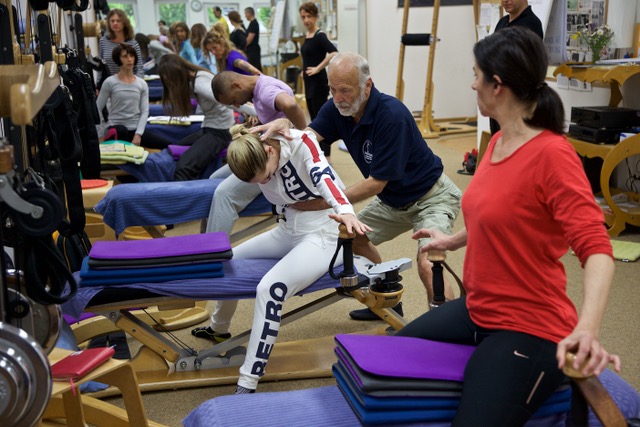
Photo provided by Iris Horvath
Cina: Is it naive to say that this work is good for everything?
Paul: Every illness, every deviation in the human system, is basically a cellular dysfunction. The biggest problems are disc-related from sitting, standing, gravity and collapsing. When you have pushing, or compression on the discs from heavy working or injury, then you need to have release and stimulation, push and pull, so you can alleviate the compression.
For example, with the Gyrotonic hamstring series, you can have this push-and-pull effect in the spine. When you have good organization working in the hamstring series, and also have the passive pulling and pushing in the context of movement, it’s the best nutrition for your disc regeneration.
In this way, every cellular unit, every organ, every system needs the same thing: stimulation in a soft way, basic slow tension and release. When you do this with intelligence, organization, and step by step, a person can be helped to comfort in their body, both physically and emotionally.
What I recognized from the beginning is that what Juliu developed with Gyrotonic and Gyrokinesis movements shares basic principles from Kundalini yoga and with other movement traditions. This kundalini was born for basic human development for human expansion.
Each of these movement systems shares these human tendencies to grow. From this background, I observed the biological activity in movement. I then recognized that even with the most injured person, you can start with the most instinctive and most basic movement that is possible for them to start with — breathing. Breathing is the central element for all therapeutic programs.
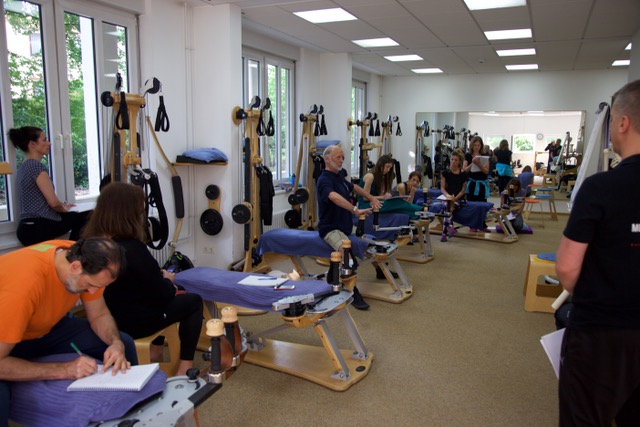
Photo provided by Iris Horvath
Maybe this is the difference between the classical Gyrotonic education and the therapeutic application. The breathing is first, before movement. Slow breathing can release a person, and slow breathing eventually permits cooperation in movement.
In what ways you can cooperate is not a secret. Minimal cooperation at its most basic starts with the tongue movement. The next is minimal movement with the leg, or the arm, but with the tendons too. Step by step, you work toward more complicated movements with more directions and tension. In this way the person can have gradual release of the pain.
I see that movement is the best healing method and the Gyrotonic movements make a big, big contribution to this. It’s not just exercise. It’s also instructive. The more complexity and connection that can be experienced depends upon the intention of the mover. I am a teacher, so I have to assess the intention of the people I am teaching. In physiotherapy, generally, there is not as much emphasis on teaching as just looking at biology. This is a negative thing because the teaching intention is important for learning, and instrumental for healing. You can’t just do it. You first need to learn the movement and then apply the movement.
This is a cultivated creation with a beginning and end that you can apply according to the needs of any client. You do this with learning, strategy, tactics, and dosage, so that you can have success in both therapy and performance.
I also have my own experiences with this work, in different contexts. I practice the Gyrotonic or Gyrokinesis Methods every day, in some capacity. Where I have seen the most specific results in my performance is when I play table tennis. This activity is heavy on the back and neck because of the position you have to sustain of leaning forward. When I don’t do the Gyrotonic work, I feel physical pain in the back and neck. Even when I do just thirty minutes, it’s like I have a new body. It’s a balancing and stabilizing system. The effect is like rejuvenation.
————-
Paul has developed three Gyrotonic Continuing Education Courses: Applications for the Pelvic Girdle, Applications for the Shoulder Girdle and Applications for Scoliosis. These courses are conducted annually. To find our more information about dates and locations, you can contact Paul directly at: paul@horvath.si.
Leave a comment below with your thoughts!

Cina Canada is a GYROTONIC® Trainer and the Media Coordinator for GYROTONIC® International Headquarters.
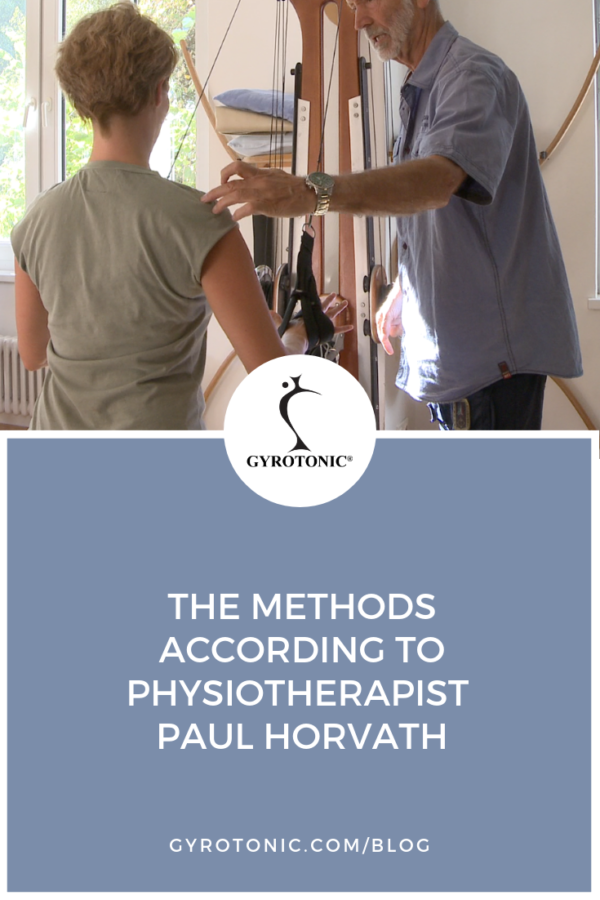
Pin for later!

Grazie sto formando I per il corso di trainer e mi auguro di conoscere bene questa disciplina
Nice work everyone! Great explanations here. Paul’s courses changed the way I view movement forever. I’ll never forget him pantomiming a farmer walking to market carrying two baskets in her hands and third on her head to demonstrate “gravitational uprightness”.
A brilliant teacher and a brilliant mind.
Great Interview /article by Paul Horvath. Looking forward to attending a Gyrotonic for Pelvic Girdle with Paul , again , some day soon . Please put us on your mailing list for workshops with Paul Horvath. I’m based in Israel.
Thanks so much,
Fanny Brando